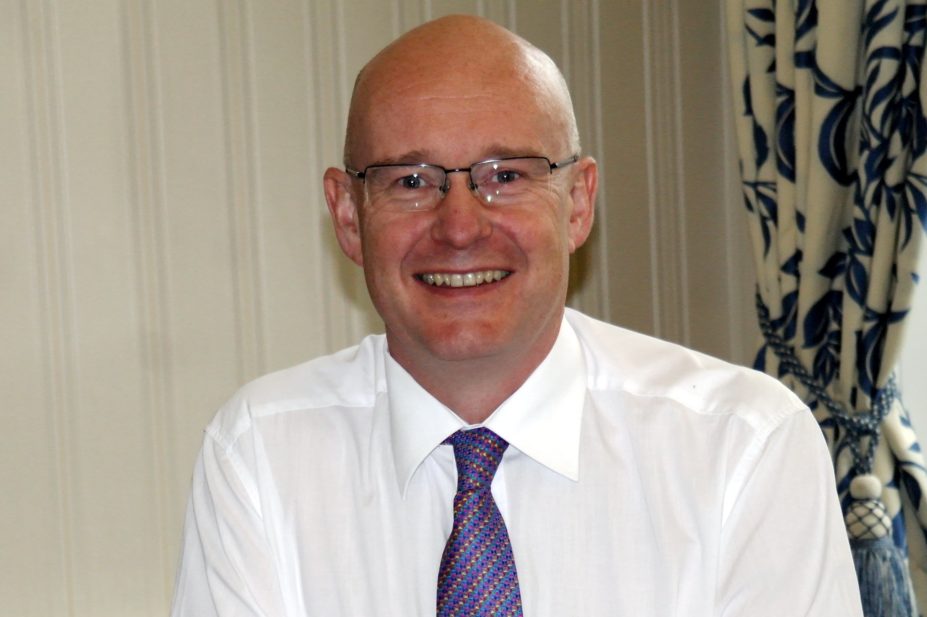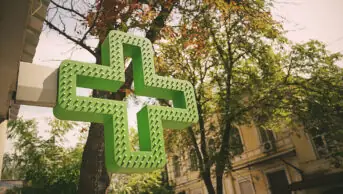
Community Pharmacy Scotland
On 11 March 2020, Harry McQuillan, chief executive of Community Pharmacy Scotland (CPS), stood alongside his colleagues, politicians and senior Scottish health figures in Edinburgh’s Signet Library to celebrate the imminent launch of Scotland’s flagship Pharmacy First service. Less than two weeks later, the whole country went into lockdown as the COVID-19 pandemic began to grip the UK.
Pharmacy First was postponed, as the sector’s focus shifted to urgent management of the crisis. Nightly video updates from McQuillan, alongside his colleague Matt Barclay, director of operations at CPS, emphasised the sheer pace of change as pharmacy grappled with continually updated guidance and unprecedented levels of demand.
The initial storm has settled, and Pharmacy First will now go live across the nation on 29 July 2020. The Pharmaceutical Journal caught up with McQuillan to explore the significance of this moment for Scotland, and to discover how CPS and Scottish pharmacies responded to the “tsunami of activity” the pandemic created.
A big thing for us is making sure that the pharmacy network maintains — or takes back — its position as the first port of call for people to be assessed for common clinical conditions
Pharmacy First has been described as the biggest change to Scottish community pharmacy in recent years. Why is it so significant?
A big thing for us is making sure that the pharmacy network maintains — or takes back — its position as the first port of call for people to be assessed for common clinical conditions. The emphasis is on a consultation service, not just on a supply service: some people may have had the view that that was the case for the minor ailments service, but it wasn’t intended to be. With Pharmacy First, your first interaction is going to be assessing the patient. It becomes the art of pharmacy: assessment, referral, or treatment, and all are free. The whole thinking is to move to a consultation service through your pharmacy, not just supply. Traditionally we’ve always done that, but this formalises it in an NHS service.
We’re also going to move to rewarding all the pharmacy team for their activities: supply or assessment, or advice only, and the consultant skills of referral.
The remuneration is giving equal weight to advice and referrals, as well as dispensing. Is this a first for Great Britain, in your experience?
Certainly in terms of how that would be captured and then taken into consideration — the remuneration for the pharmacy activity — as far as I’m aware it is. I don’t think there’s anything else that does that. It was one of the notes that really rang true with the network, from roadshows at the turn of the year: the number of nodding heads when we said you’ll be able to record your “advice only”, and get recognised for the number of times you provide good advice to the public.
It also gives us a real baseline of data about just how many interventions the pharmacy network provides. You can then start to tailor your service to the data you’re collecting, and make it much more targeted for your interventions. It demonstrates the amount of activity that the pharmacy network takes on, on behalf of the NHS. The network would say that they’ve always done it: for the first time, we’ll really start to quantify that.
I would like to see pharmacy included in what I refer to as a ‘spider’s web of information’
In the Health and Sport Committee’s recent report on medicine supply and demand, there were some concerns about the lack of IT systems to record the interactions between pharmacists, patients and prescribers. Do you agree with those concerns? And if so, how can they be addressed?
I’m not sure that I agree with the concern that they’re not recorded. I think they are, there’s just no centralisation of it. I could give you many instances of pharmacists recording the patient medication record (PMR) activity that they’ve done with patients. I think it’s the integration and the availability to extract the data that doesn’t exist. That’s my view; I don’t think that really came through in the report.
Moving ahead, I would like to see pharmacy included in what I refer to as a ‘spider’s web of information’, so that no point on the web is more important than the other, but it contributes to its strength. All of the different data sources could feed into the spider’s web to give you the big picture. That’s where I think the healthcare service and health records need to be, and pharmacy needs to be one of those strands feeding into that web.
In the early days of the pandemic, we saw the rapid rollout of video consultations in pharmacies, through NHS Near Me. Would you like to see that as a permanent feature?
I would. I’m keen for the network to realise that it’s a tool to allow you to deliver the service: it’s not service in its own right. It’s a slightly different skill set; how do you go about doing consultation over this type of technology? It can be done and it should be used: but used to do what? For me, it’s delivery of a service, making sure patients get the care they need at the time they need, and in periods of risk where people are at home or having to shield then it makes sense to make use of the technology available to us.
What we need to make sure is that the infrastructure — IT, bandwidths, etc. — works well for the network and for the patient on the other end. And then at some point, we need to have a look and make sure that the use of that technology doesn’t give a different level of outcome from face-to-face.
We were having to adapt to information that you got on a Monday that was out of date by the time you came to Friday
What was it like for Community Pharmacy Scotland adapting to the very sudden, huge demands of the pandemic?
We put in long days. We were answering calls and queries from 7.30am, then trying to get the solutions during the day, liaising with government colleagues throughout, and then, after 6pm, we dealt with the queries when the pharmacies were closed again.
We needed solutions quickly: we were having to adapt to information that you got on a Monday that was out of date by the time you came to Friday. And your decision-making timeframe really shortened.
How happy are you with the way Scotland has managed the pandemic, both within pharmacy and more widely?
The network has to be applauded and recognised for its resilience, and the professionalism and commitment to providing a service in the tsunami of activity that hit it towards the end of March and through April 2020. The resolve to keep providing the service was just incredible. The recognition, now — from politicians and other parts of the health service — of the real asset that a community pharmacy network at the heart of communities is, is a tremendous thing. I’ll be asking for that support to continue as we go ahead.
For a period, the network creaked and the supply system creaked, but it didn’t fall. And that was a real testament in the face of a workload that we haven’t faced for decades.
The actual concentration that the network had to deal with was incredible
This word’s been used a lot, but it really was unprecedented, wasn’t it?
Absolutely. And the thing is, it came within a two-week period. March had a 50% increase in prescribing, but it all happened within five days! You had a kind of normal month, and then all of a sudden it just exploded. Over the whole month, it became 50%, but in that fortnight, it was 200% over five or six days. So, the actual concentration that the network had to deal with was incredible. It was just a wonder to behold, to be honest.
Are you concerned about the impact on the sector if we have a second wave?
In terms of a second wave, Scotland has probably — along with Wales and Northern Ireland — taken a bit more of a cautious approach to the reopening of services in the NHS than, potentially, our colleagues in England. I think we could probably be in a position to control it; I’m more confident to say that, and there is the test and protect system that we have, which involves contact tracing, to try and minimise and mitigate any spikes as they come back.
That’s not to say that we will completely control it, but I think we’re in a reasonable place for an infrastructure that will help us stop that. I don’t think we’ll enter into another period where the network comes under as much stress because the patients and public, I get the sense, are almost accepting that this is the way it’s going to be. In the main, the public appears to be adhering to the public health advice.


